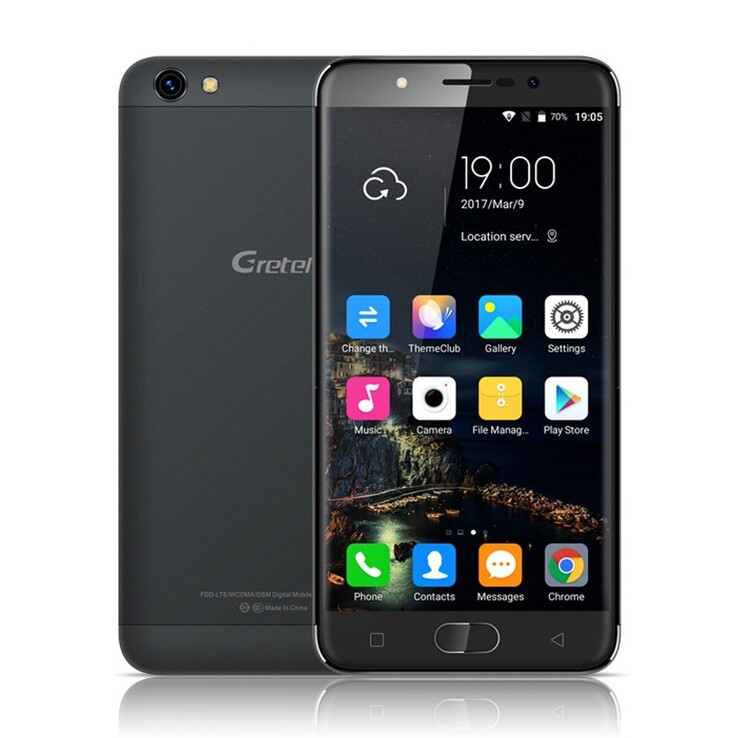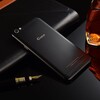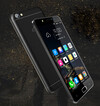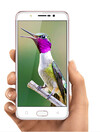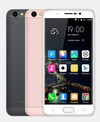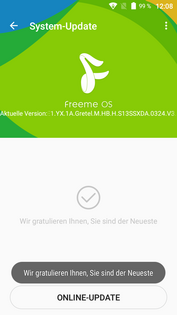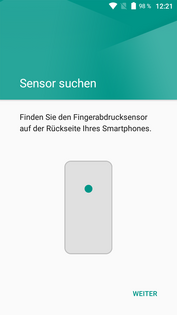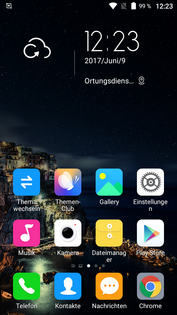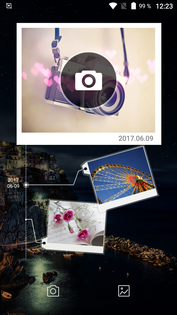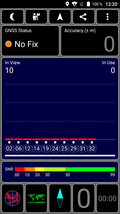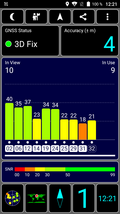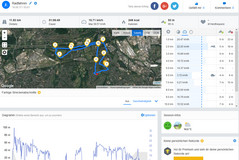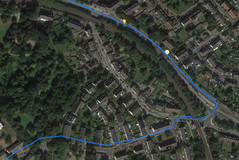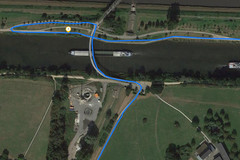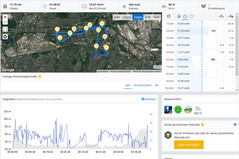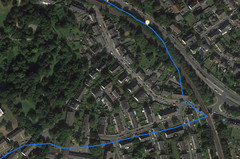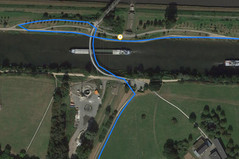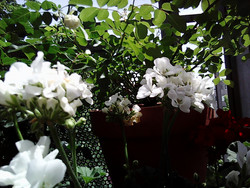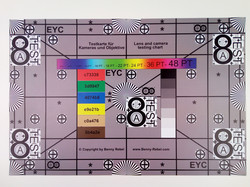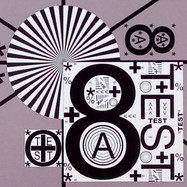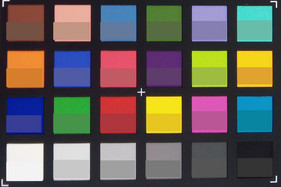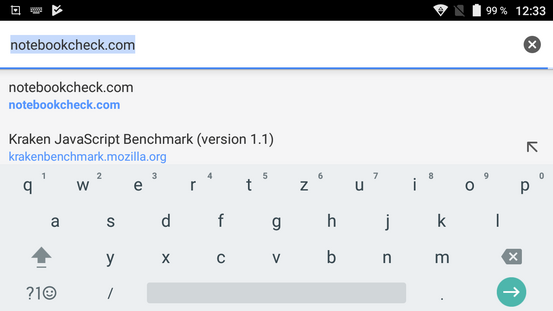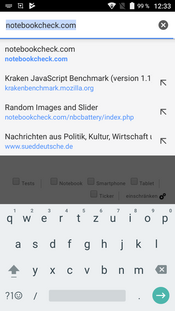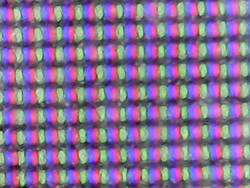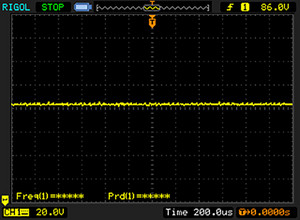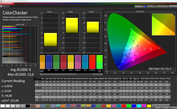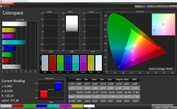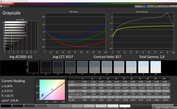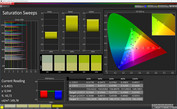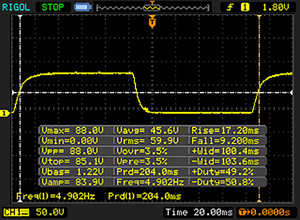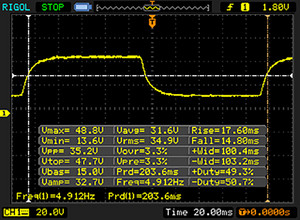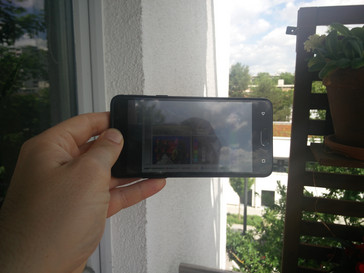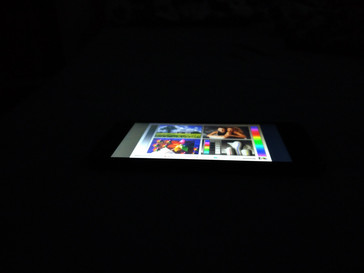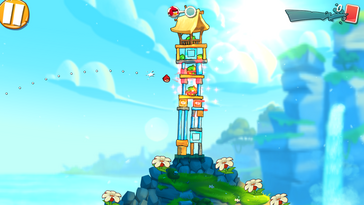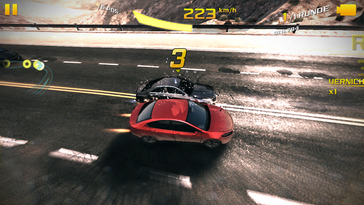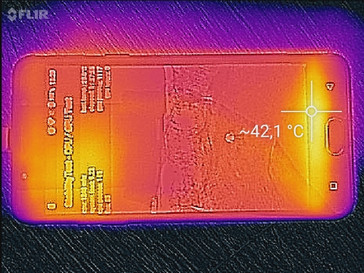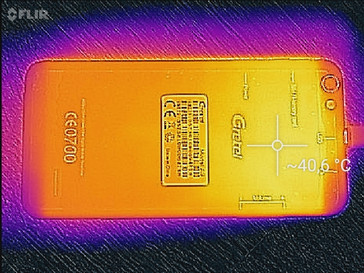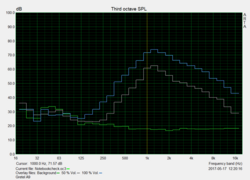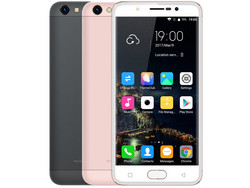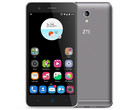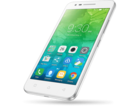Gretel A9 Smartphone Review
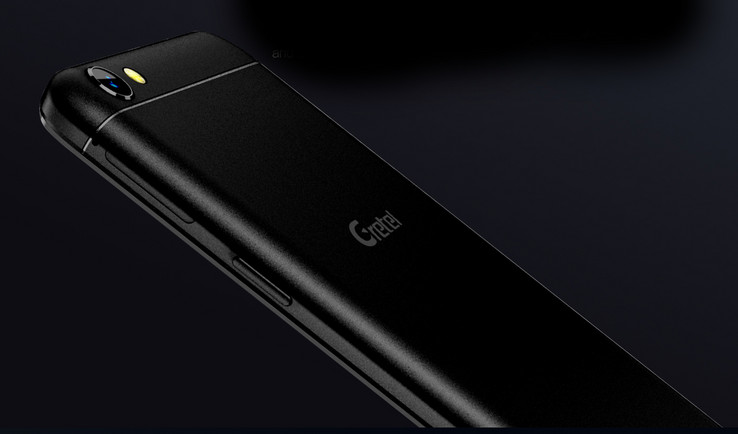
For the original German review, see here.
Gretel is the latest of many Chinese manufacturers, who have recently entered the European and American markets. The origin of the odd-sounding name remains a mystery, and we were unable to find anything on Gretel’s website. As is the case with most Chinese manufacturers, Gretel’s focus is on cheap yet well-equipped smartphones. Accordingly, the A9 faces a market that is hard to stand out in.
One unique selling point is certainly its low price of only $80, but the spec sheet does not reflect this low price: metal cover at the rear, 2.5D glass at the front, fingerprint reader, dual SIM, and LTE Cat. 4. Our review is going to reveal whether or not the device’s low price is obvious in everyday use.
The A9 is Gretel’s mid-range smartphone, with the $50 Gretel A7 representing the entry-level offering, and the two $90 5.5-inch A6 and GT6000 models bringing up the high-end rear. The latter even features dual cameras and a 6000 mAh battery.
Our test group is comprised of the following smartphones: the Lenovo C2, the Blackview R6, the ZTE Blade A510, and the Archos 50 Platinum 4G.
Case
More often than not, affordable entry-level smartphones are made entirely out of plastic. Not the A9 though, according to the spec sheet the rear cover is made of metal. Too bad we were unable to tell based on touch and feel alone, because it certainly does not feel or sound like metal. Overall, it feels pretty well made though, so maybe it is not that important what material it is made of. More importantly, the rear cover cannot be removed, and accordingly the battery is not replaceable. Most of the competitors offer user-replaceable batteries.
The 2.5D glass front with its rounded edges is supposed to highlight the A9’s premium aspirations, but they are only noticeable from up close and feel fairly sharp rather than rounded. The device is available in black or rose gold, the latter with a white front.
The A9’s weight is somewhat hefty for a 5-inch device: at 166 g (5.86 oz), it is much heavier than its competitors. Thickness is average (8.7 mm / 0.34 inches), but its footprint is pretty massive. Rigidity is top notch: pressure applied to the back does not show on the display at all, and pressure applied to the front has almost no effect on the liquid crystal display. The case is not susceptible to torsional force at all.
Overall, the A9’s case certainly is not spectacular but very solid and well made. Even at twice its price the case would still be more than acceptable, and its price/performance ratio is quite impressive.
Connectivity
16 GB of storage space and 2 GB of RAM are quite good considering the A9’s price. Only the Blackview R6 offers more storage space. The A9 supports dual SIM cards, one Nano and one Micro SIM. Alternatively, the Micro SIM slot can take MicroSD cards of up to 32 GB. Our 64 GB reference card worked as well though, so we suspect licensing rather than hardware limitations. Inserted MicroSD cards can be formatted as internal storage to store apps and media, or external storage for storing media only.
Gretel has opted for the more common Micro USB port instead for the modern USB Type-C port. The device supports USB-OTG, meaning you should be able to attach external storage via USB, and features a fingerprint reader. A unique feature that only the Blackview R6 has to offer as well.
Software
The A9 runs Android 6.0, and despite the fact that Gretel promised general availability of Android 7.0 for April 2017, it is now June, and Android 7.0 is nowhere to be seen. The internal update mechanism happily proclaims “Congratulations! You’re the latest!” and is a first hint at one of the weaknesses of the modified Android Gretel refers to as “FreeMe OS”: its translations lack refinement, and occasionally images and icons are mixed up. Obviously, this only affects the parts that Gretel has modified and/or added, the rest of the Android operating system is translated just fine. Gretel’s modifications are mostly limited to some extra settings as well as a theme manager and modified GUI effects, such as blurry backgrounds behind opened folders (*cough* iOS *cough*) or wobbly app icons on the home screen (*cough* iOS *cough*).
There is almost no bloatware preloaded on the A9, but it does have Facebook, Instagram, Twitter, WhatsApp, and WeChat preinstalled. Fortunately, all of these can be uninstalled to free up additional storage space if you chose not to use them or simply do not need them.
Communication and GPS
The Gretel A9 supports six LTE/4G, two UMTS/3G, and four GMS/2G bands, and also supports LTE Cat. 4 speeds of up to 150/50 Mbit/s (download/upload). Unfortunately, the bands supported are more common in Europe than the United States. When tested in Germany, LTE signal lock was obtained quickly and reliably even inside buildings.
As is quite common for this price range, the Wi-Fi chip supports 802.11 b/g/n networks. Wi-Fi transfer speeds were much slower than on the Lenovo C2, but still acceptable overall. Standing next to the Wi-Fi router, signal strength was at its peak and websites loaded quickly. At a distance of around 10 m (33 ft) and with three walls in between, signal strength was still at an acceptable 75%, and websites loaded only slightly slower than before. Thus, Wi-Fi reception on the Gretel A9 is pretty good.
| Networking | |
| iperf3 transmit AX12 | |
| Lenovo C2 | |
| Gretel A9 | |
| Blackview R6 | |
| ZTE Blade A510 | |
| iperf3 receive AX12 | |
| Lenovo C2 | |
| ZTE Blade A510 | |
| Gretel A9 | |
| Blackview R6 | |
GPS lock was not obtained indoors at all, outdoors the A9 managed to locate us with an accuracy of 4 m (13 ft) quite quickly. Considering the devices price, these results are very good.
In order to make more accurate statements regarding the GPS module, we took the tablet and a Garmin Edge 500, specifically designed for bicycles, on a bike ride. After 12 km (~7.5 mi), the deviation between the two was only 170 m (~186 yd) – quite impressive. It was far from perfect though, because quite often the A9 “forgot” to update our position and drew straight lines instead of actually following the road/track. Thus, it is unsuitable even for occasional navigation.
Telephone and Call Quality
The phone app has been modified by Gretel, but it offers the same features as Google’s stock phone app.
Call quality was mediocre. The small earphone speaker is rather dull, and so was our own voice according to our conversation partner. The speakerphone offered a better quality, and our voice was less dull as well. Overall, for its price range, call quality is a bit better than average.
Cameras
The main rear-facing 8 MP camera’s photos can be interpolated up to 13 MP in software. Basically, the 13 MP photo is an upscaled version of the 8 MP photo, meaning that image quality suffers. Photos taken outdoors have a rather warm white balance, which means they have an ever so slightly red tint. Sharpness is good but cannot keep up with the likes of a Samsung Galaxy S8, especially when zoomed in. Large uniform areas suffer from compression artifacts and are visibly pixelated, and dark areas are not brightened up in post-processing. This is obviously more pronounced in overall dark rather than in overall bright photos. The Samsung Galaxy S8 or the LG G6 fare much better in this regard, and darker areas have more details on photos taken with either of these two. The A9 records video in 720p, and while brightness adjustment is performed very quickly it is also visibly graduated. Quick movements and turns are no problem for the camera at all.
The secondary front facing camera is equipped with a 2 MP sensor. Once again, interpolation to 5 MP can be performed in software, but even without doing so photos seem rather blurry and artificial. Zooming in one can clearly see the scruffy edges around objects that are mainly responsible for this effect. At least exposure is decent, but dark areas are once again not brightened up during post-processing.
Overall, the main camera is usable for taking quick snaps occasionally. Selfie quality, on the other hand, is pretty poor.
Aforementioned red tint was also very noticeable in our lab under normalized lighting conditions, and the camera’s weaknesses were exposed very clearly: blurry text on a reddish background, a general lack of focus that gets even worse around the edges, and colors that are too bright.
Accessories and Warranty
The manufacturer sells its devices with a 24-month warranty, but it is unclear at this stage whether the smartphone has to be mailed back to China for a claim to process. Please see our Guarantees, Return policies and Warranties FAQ for country-specific information.
In addition to the phone itself, the box contains a charger, a USB cable, a SIM tool, a translucent protective case, and a display protector. Considering its price point, the included accessories are quite impressive, and expecting a high-quality headset at this price point would be too much to ask for anyway.
Input Devices and Handling
The virtual keyboard of Gretel’s choice is Google’s stock GBoard keyboard – no surprises there. Considering the A9’s price point of less than $80, the fingerprint reader was a big surprise though. It is not the fastest and unlocking the device is a bit slow but still acceptable, especially considering that it can be unlocked straight from standby mode. The buttons for back and multitasking view are located left and right of the fingerprint reader, however they do not work as expected. While the 'back' button does, the 'multitasking view' button action and the long press of the home button action are swapped for some reason unbeknownst to us. In other words: back is back; multitasking view is long press of home button; long press of home button is multitasking view. Confused? So are we.
The touchscreen does not feel very premium, and sometimes we were under the impression of experiencing a slight lag during input. Most of the time it worked as expected though.
The power button is located on the right side right underneath the SIM card tray. The latter protrudes noticeably from the case, and can be easily confused for the volume rocker, which is actually located on the left side. The buttons are positioned very well and have a clear and precise actuation point.
The A9 also supports gestures, for example swiping across the screen in the camera app to change screens, or starting applications by drawing letters on the screen. Overall, this worked quite well during our tests.
Display
The display resolution of 1280x720 is quite common for 5-inch devices in this price range, and it seems a bit blurry when compared to an FHD display. Its display brightness of 370 nits is average, and the Lenovo C2 or the ZTE Blade A510 is much brighter. Brightness distribution is at a decent 90%.
| |||||||||||||||||||||||||
Brightness Distribution: 90 %
Center on Battery: 380 cd/m²
Contrast: 974:1 (Black: 0.39 cd/m²)
ΔE ColorChecker Calman: 8 | ∀{0.5-29.43 Ø4.77}
ΔE Greyscale Calman: 8.5 | ∀{0.09-98 Ø5}
Gamma: 2.8
CCT: 8337 K
| Gretel A9 IPS, 1280x720, 5" | Blackview R6 IPS, 1920x1080, 5.5" | Archos 50 Platinum 4G IPS, 1280x720, 5" | Lenovo C2 IPS, 1280x720, 5" | ZTE Blade A510 IPS, 1280x720, 5" | |
|---|---|---|---|---|---|
| Screen | -4% | -6% | 16% | 15% | |
| Brightness middle (cd/m²) | 380 | 352 -7% | 344 -9% | 458 21% | 528 39% |
| Brightness (cd/m²) | 370 | 320 -14% | 349 -6% | 449 21% | 524 42% |
| Brightness Distribution (%) | 90 | 81 -10% | 89 -1% | 92 2% | 94 4% |
| Black Level * (cd/m²) | 0.39 | 0.3 23% | 0.65 -67% | 0.35 10% | 0.62 -59% |
| Contrast (:1) | 974 | 1173 20% | 529 -46% | 1309 34% | 852 -13% |
| Colorchecker dE 2000 * | 8 | 8.7 -9% | 5.8 27% | 6.5 19% | 5.2 35% |
| Colorchecker dE 2000 max. * | 13.6 | 15.1 -11% | 10.7 21% | 11.7 14% | 8.7 36% |
| Greyscale dE 2000 * | 8.5 | 10.5 -24% | 5.7 33% | 7.7 9% | 5.7 33% |
| Gamma | 2.8 79% | 2.04 108% | 2.1 105% | 2.15 102% | 1.99 111% |
| CCT | 8337 78% | 8529 76% | 7792 83% | 8518 76% | 6631 98% |
* ... smaller is better
Screen Flickering / PWM (Pulse-Width Modulation)
| Screen flickering / PWM not detected | |||
In comparison: 53 % of all tested devices do not use PWM to dim the display. If PWM was detected, an average of 8081 (minimum: 5 - maximum: 343500) Hz was measured. | |||
The display’s black level of 0.39 nits is quite low, meaning that black areas on the screen are actually literally black, and the resulting contrast ratio of 974:1 is okay. Subjectively, colors seem to be a bit dull and hazy. Thankfully, this can be somewhat alleviated with the “MiraVision” software, which – among other things – can be used to enable dynamic contrast to improve the screen’s color representation and saturation.
Measured with a spectrophotometer and the CalMAN software, we have noticed a very pronounced blue tint. Fortunately, this can also be fixed in the settings. Color deviations remain too high overall, especially for blue colors.
We have found no traces of PWM flickering even at reduced brightness levels.
Display Response Times
| ↔ Response Time Black to White | ||
|---|---|---|
| 26.4 ms ... rise ↗ and fall ↘ combined | ↗ 17.2 ms rise | |
| ↘ 9.2 ms fall | ||
| The screen shows relatively slow response rates in our tests and may be too slow for gamers. In comparison, all tested devices range from 0.1 (minimum) to 240 (maximum) ms. » 65 % of all devices are better. This means that the measured response time is worse than the average of all tested devices (20.2 ms). | ||
| ↔ Response Time 50% Grey to 80% Grey | ||
| 32.4 ms ... rise ↗ and fall ↘ combined | ↗ 17.6 ms rise | |
| ↘ 14.8 ms fall | ||
| The screen shows slow response rates in our tests and will be unsatisfactory for gamers. In comparison, all tested devices range from 0.165 (minimum) to 636 (maximum) ms. » 43 % of all devices are better. This means that the measured response time is similar to the average of all tested devices (31.6 ms). | ||
The A9 is certainly usable outdoors, at least as long as it is not too bright. The display is very reflective, and its mediocre maximum brightness fails to outshine the reflections.
As expected of an IPS panel, viewing angles are superb from all directions and angles. We have noticed a very minor shift in brightness at acute angles, but it is barely noticeable to the naked eye.
Performance
The Gretel A9 is powered by a Mediatek MT6737 quad-core SoC running at 1.3 GHz. It offers more than sufficient processing power and even manages to keep up with the very fast Blackview R6 in some benchmarks. Translated to real world user experiences, this means smooth and fluid handling as well as fast application startup.
The GPU is a 2014 ARM Mali-T720 MP2 running at 650 MHz. Due to its age, graphics performance is only mediocre at best and worse than on the Blackview R6 or Archos 50 Platinum.
| AnTuTu v6 - Total Score (sort by value) | |
| Gretel A9 | |
| Archos 50 Platinum 4G | |
| Blackview R6 | |
| Lenovo C2 | |
| ZTE Blade A510 | |
| 3DMark | |
| 1280x720 offscreen Ice Storm Unlimited Score (sort by value) | |
| Gretel A9 | |
| Archos 50 Platinum 4G | |
| Blackview R6 | |
| Lenovo C2 | |
| ZTE Blade A510 | |
| 1280x720 offscreen Ice Storm Unlimited Graphics Score (sort by value) | |
| Gretel A9 | |
| Archos 50 Platinum 4G | |
| Blackview R6 | |
| ZTE Blade A510 | |
| 1280x720 offscreen Ice Storm Unlimited Physics (sort by value) | |
| Gretel A9 | |
| Archos 50 Platinum 4G | |
| Blackview R6 | |
| ZTE Blade A510 | |
| 2560x1440 Sling Shot OpenGL ES 3.0 (sort by value) | |
| Gretel A9 | |
| Blackview R6 | |
| Lenovo C2 | |
| 2560x1440 Sling Shot OpenGL ES 3.0 Graphics (sort by value) | |
| Gretel A9 | |
| Blackview R6 | |
| 2560x1440 Sling Shot OpenGL ES 3.0 Physics (sort by value) | |
| Gretel A9 | |
| Blackview R6 | |
| 2560x1440 Sling Shot Extreme (ES 3.1) (sort by value) | |
| Gretel A9 | |
| Blackview R6 | |
| Lenovo C2 | |
| 2560x1440 Sling Shot Extreme (ES 3.1) Graphics (sort by value) | |
| Gretel A9 | |
| Blackview R6 | |
| 2560x1440 Sling Shot Extreme (ES 3.1) Physics (sort by value) | |
| Gretel A9 | |
| Blackview R6 | |
| GFXBench (DX / GLBenchmark) 2.7 | |
| T-Rex Onscreen (sort by value) | |
| Gretel A9 | |
| Archos 50 Platinum 4G | |
| Blackview R6 | |
| Lenovo C2 | |
| ZTE Blade A510 | |
| 1920x1080 T-Rex Offscreen (sort by value) | |
| Gretel A9 | |
| Archos 50 Platinum 4G | |
| Blackview R6 | |
| Lenovo C2 | |
| ZTE Blade A510 | |
| GFXBench 3.0 | |
| on screen Manhattan Onscreen OGL (sort by value) | |
| Gretel A9 | |
| Archos 50 Platinum 4G | |
| Blackview R6 | |
| Lenovo C2 | |
| ZTE Blade A510 | |
| 1920x1080 1080p Manhattan Offscreen (sort by value) | |
| Gretel A9 | |
| Archos 50 Platinum 4G | |
| Blackview R6 | |
| Lenovo C2 | |
| GFXBench 3.1 | |
| on screen Manhattan ES 3.1 Onscreen (sort by value) | |
| Gretel A9 | |
| Archos 50 Platinum 4G | |
| Blackview R6 | |
| Lenovo C2 | |
| ZTE Blade A510 | |
| 1920x1080 Manhattan ES 3.1 Offscreen (sort by value) | |
| Gretel A9 | |
| Archos 50 Platinum 4G | |
| Blackview R6 | |
| Lenovo C2 | |
| ZTE Blade A510 | |
| PCMark for Android | |
| Work performance score (sort by value) | |
| Gretel A9 | |
| Archos 50 Platinum 4G | |
| Blackview R6 | |
| Lenovo C2 | |
| ZTE Blade A510 | |
| Work 2.0 performance score (sort by value) | |
| Gretel A9 | |
| ZTE Blade A510 | |
| BaseMark OS II | |
| Overall (sort by value) | |
| Gretel A9 | |
| Archos 50 Platinum 4G | |
| Blackview R6 | |
| Lenovo C2 | |
| ZTE Blade A510 | |
| System (sort by value) | |
| Gretel A9 | |
| Archos 50 Platinum 4G | |
| Blackview R6 | |
| Lenovo C2 | |
| ZTE Blade A510 | |
| Memory (sort by value) | |
| Gretel A9 | |
| Archos 50 Platinum 4G | |
| Blackview R6 | |
| Lenovo C2 | |
| ZTE Blade A510 | |
| Graphics (sort by value) | |
| Gretel A9 | |
| Archos 50 Platinum 4G | |
| Blackview R6 | |
| Lenovo C2 | |
| ZTE Blade A510 | |
| Web (sort by value) | |
| Gretel A9 | |
| Archos 50 Platinum 4G | |
| Blackview R6 | |
| Lenovo C2 | |
| ZTE Blade A510 | |
| Geekbench 4.4 | |
| 64 Bit Single-Core Score (sort by value) | |
| Gretel A9 | |
| 64 Bit Multi-Core Score (sort by value) | |
| Gretel A9 | |
| Compute RenderScript Score (sort by value) | |
| Gretel A9 | |
Browsing the web is faster on the Gretel A9 than on many similarly priced competitors. However, the Blackview R6 is faster here as well. Still, even demanding HTML5 websites were smooth and rendered quickly on the A9.
| Octane V2 - Total Score (sort by value) | |
| Gretel A9 | |
| Archos 50 Platinum 4G | |
| Blackview R6 | |
| Lenovo C2 | |
| ZTE Blade A510 | |
| Mozilla Kraken 1.1 - Total (sort by value) | |
| Gretel A9 | |
| Archos 50 Platinum 4G | |
| Blackview R6 | |
| Lenovo C2 | |
| ZTE Blade A510 | |
| JetStream 1.1 - Total Score (sort by value) | |
| Gretel A9 | |
| Archos 50 Platinum 4G | |
| Blackview R6 | |
| Lenovo C2 | |
| ZTE Blade A510 | |
* ... smaller is better
When tested with our 64 GB Toshiba Exceria Pro M401 reference card, the SD card reader turned out to be very slow. And while we came to expect rather sluggish SD card readers for devices in this price range, the A9 had one of the slowest SD card readers of our entire test group.
On the other hand, internal storage transfer speeds are much higher than on most of its competitors, especially when performing sequential reads.
| AndroBench 3-5 | |
| Sequential Read 256KB (sort by value) | |
| Gretel A9 | |
| Archos 50 Platinum 4G | |
| Blackview R6 | |
| Lenovo C2 | |
| ZTE Blade A510 | |
| Sequential Write 256KB (sort by value) | |
| Gretel A9 | |
| Archos 50 Platinum 4G | |
| Blackview R6 | |
| Lenovo C2 | |
| ZTE Blade A510 | |
| Random Read 4KB (sort by value) | |
| Gretel A9 | |
| Archos 50 Platinum 4G | |
| Blackview R6 | |
| Lenovo C2 | |
| ZTE Blade A510 | |
| Random Write 4KB (sort by value) | |
| Gretel A9 | |
| Archos 50 Platinum 4G | |
| Blackview R6 | |
| Lenovo C2 | |
| ZTE Blade A510 | |
| Sequential Read 256KB SDCard (sort by value) | |
| Gretel A9 | |
| Archos 50 Platinum 4G | |
| Blackview R6 | |
| Lenovo C2 | |
| ZTE Blade A510 | |
| Sequential Write 256KB SDCard (sort by value) | |
| Gretel A9 | |
| Archos 50 Platinum 4G | |
| Blackview R6 | |
| Lenovo C2 | |
| ZTE Blade A510 | |
Gaming
The Gretel A9 is not made for gaming, and the device is swamped with demanding games such as Asphalt 8: Airborne. It remained somewhat playable on reduced details but was far from enjoyable. More modest games, such as Angry Birds 2, are no problem at all.
Controls via touchscreen and gyroscope sensor worked as expected.
Emissions
Temperature
The A9 heats up noticeably, and reaches a maximum temperature of 36.6 °C (98 °F) when idle and up to 43.4 °C (110 °F) under load. While this is far from critical, it can get uncomfortable. To make matters worse, the hot spot is around the earphone, and talking on the phone for prolonged periods of time can get quite awkward.
(±) The maximum temperature on the upper side is 43.4 °C / 110 F, compared to the average of 35.2 °C / 95 F, ranging from 21.9 to 247 °C for the class Smartphone.
(+) The bottom heats up to a maximum of 39.2 °C / 103 F, compared to the average of 34 °C / 93 F
(±) In idle usage, the average temperature for the upper side is 34.7 °C / 94 F, compared to the device average of 32.9 °C / 91 F.
Speaker
The small, single, rear-facing speaker gets very dull with the phone placed on a table. At only 79 dB(A) it does not get particularly loud either. The soundscape is okay, even though our ARTA measurements seem to be indicating the contrary. Overall, the speaker is rather weak but still acceptable, especially when compared to other similarly priced smartphones.
For an enjoyable music experience, we would certainly advise you to use either Bluetooth or regular headphones/external speakers. The integrated 3.5 mm headphone jack worked very well and produced a very clear soundscape.
Gretel A9 audio analysis
(±) | speaker loudness is average but good (79 dB)
Bass 100 - 315 Hz
(-) | nearly no bass - on average 24.3% lower than median
(±) | linearity of bass is average (8.7% delta to prev. frequency)
Mids 400 - 2000 Hz
(±) | higher mids - on average 10.5% higher than median
(±) | linearity of mids is average (12.2% delta to prev. frequency)
Highs 2 - 16 kHz
(±) | higher highs - on average 5.6% higher than median
(+) | highs are linear (6.7% delta to prev. frequency)
Overall 100 - 16.000 Hz
(-) | overall sound is not linear (35% difference to median)
Compared to same class
» 85% of all tested devices in this class were better, 1% similar, 14% worse
» The best had a delta of 11%, average was 35%, worst was 134%
Compared to all devices tested
» 93% of all tested devices were better, 1% similar, 6% worse
» The best had a delta of 4%, average was 24%, worst was 134%
Lenovo C2 audio analysis
(±) | speaker loudness is average but good (80.1 dB)
Bass 100 - 315 Hz
(-) | nearly no bass - on average 34.3% lower than median
(±) | linearity of bass is average (8.5% delta to prev. frequency)
Mids 400 - 2000 Hz
(±) | reduced mids - on average 6% lower than median
(±) | linearity of mids is average (7.5% delta to prev. frequency)
Highs 2 - 16 kHz
(+) | balanced highs - only 2.1% away from median
(+) | highs are linear (2.7% delta to prev. frequency)
Overall 100 - 16.000 Hz
(±) | linearity of overall sound is average (25.9% difference to median)
Compared to same class
» 65% of all tested devices in this class were better, 6% similar, 29% worse
» The best had a delta of 11%, average was 35%, worst was 134%
Compared to all devices tested
» 79% of all tested devices were better, 4% similar, 17% worse
» The best had a delta of 4%, average was 24%, worst was 134%
Frequency diagram (checkboxes selectable/deselectable!)
Energy Management
Power Consumption
At only 0.22 W, power consumption on standby was very low. When idle with the screen turned on, the A9 consumed between 0.77 and 2.2 W, and therefore more than most of its competitors. Under load, only the Blackview R6 needed even more energy than the A9.
| Off / Standby | |
| Idle | |
| Load |
|
Key:
min: | |
| Gretel A9 2300 mAh | Archos 50 Platinum 4G 2200 mAh | Blackview R6 3000 mAh | Lenovo C2 2750 mAh | ZTE Blade A510 2200 mAh | |
|---|---|---|---|---|---|
| Power Consumption | 18% | -12% | 24% | 12% | |
| Idle Minimum * (Watt) | 0.77 | 0.59 23% | 0.78 -1% | 0.71 8% | 0.61 21% |
| Idle Average * (Watt) | 1.99 | 1.68 16% | 1.63 18% | 1.62 19% | 1.75 12% |
| Idle Maximum * (Watt) | 2.2 | 1.79 19% | 1.84 16% | 1.64 25% | 1.83 17% |
| Load Average * (Watt) | 4.99 | 4.22 15% | 7.47 -50% | 3.24 35% | 4.49 10% |
| Load Maximum * (Watt) | 5.14 | 4.26 17% | 7.47 -45% | 3.36 35% | 5.14 -0% |
* ... smaller is better
Battery Life
Thanks to its 2300 mAh (8.7 Wh) battery, the Gretel A9’s battery life is acceptable. The Lenovo C2 and the Blackview R6 lasted longer though. The A9 ran out of power after 7:38 hours in our Wi-Fi test, and after a bit less than 3 hours under load.
We had to charge the A9 quite often during our tests, especially when running benchmarks. Despite the lack of QuickCharge, the battery was fully charged from 0 to 100% after around two hours.
| Gretel A9 2300 mAh | Archos 50 Platinum 4G 2200 mAh | Blackview R6 3000 mAh | Lenovo C2 2750 mAh | ZTE Blade A510 2200 mAh | |
|---|---|---|---|---|---|
| Battery runtime | -16% | 25% | 56% | -9% | |
| WiFi v1.3 (h) | 7.6 | 6.4 -16% | 10.1 33% | 11 45% | 6.9 -9% |
| Load (h) | 2.9 | 3.4 17% | 4.8 66% |
Pros
Cons
Verdict
Gretel’s first appearance on Notebookcheck turned out to be quite interesting. The A9 is a solid entry-level smartphone with features that the competition lacks, for example its integrated fingerprint reader or amount of memory. While certainly not the best, call quality is okay overall, and so is the screen that can be fine-tuned to your liking thanks to MiraVision. Processing power is decent, graphics performance not so much: the A9 is not made for gaming. The speaker is rather quiet but we have heard much worse, and battery life is acceptable. Normal use should yield you between one and two days of battery life.
One question remains: what are the drawbacks of this sub $80 phone? Most certainly the cameras. Interpolation is a thing of the past, and the front facing camera’s 2 MP sensor is simply too small to take decent photos. The cameras are all but unusable in less than ideal lighting conditions, and videos are only recorded in 720p. While case quality defects can be easily overlooked at this price point, the cameras will be a deal-breaker for most users.
The entry-level Gretel A9 offers a lot for under $80 – fingerprint reader, plenty of memory, and comparatively high performance. The poor cameras will be a deal-breaker for most users, though.
Still, for only $80 the Gretel A9 is a decent smartphone that offers more than its competitors offer, and therefore deserves a chance.
Gretel A9
- 06/12/2017 v6 (old)
Florian Wimmer


